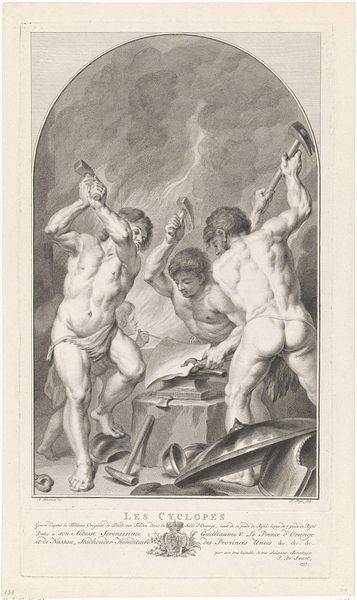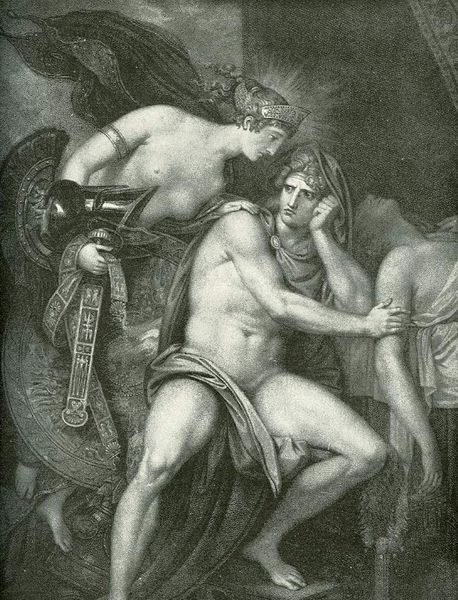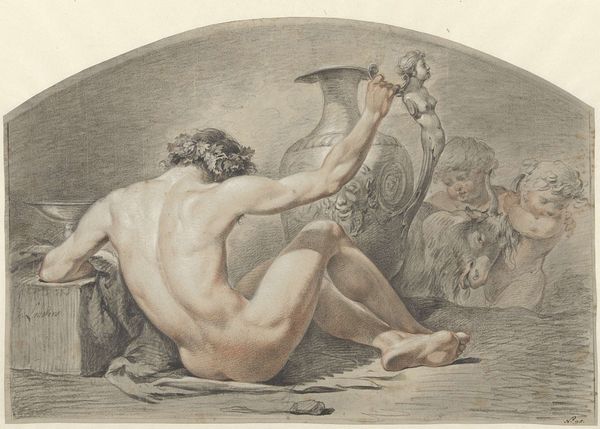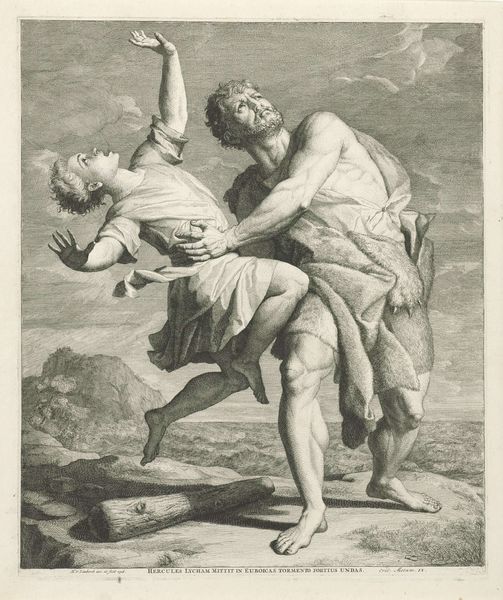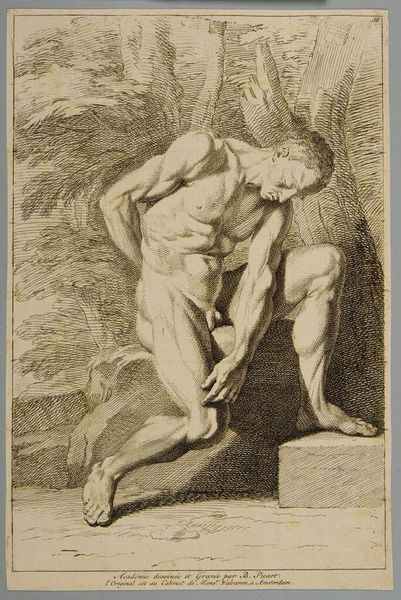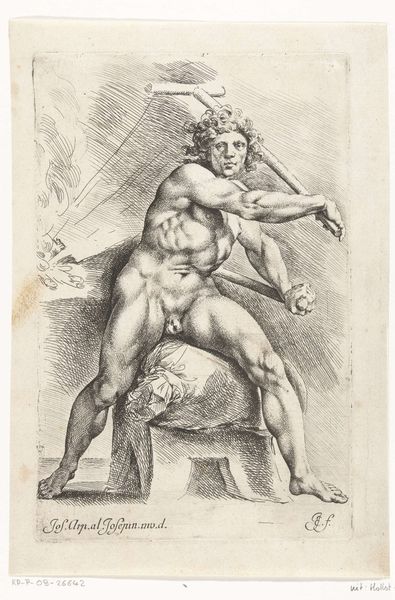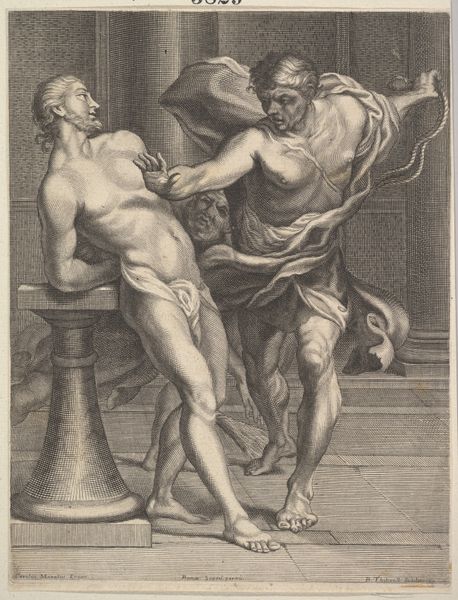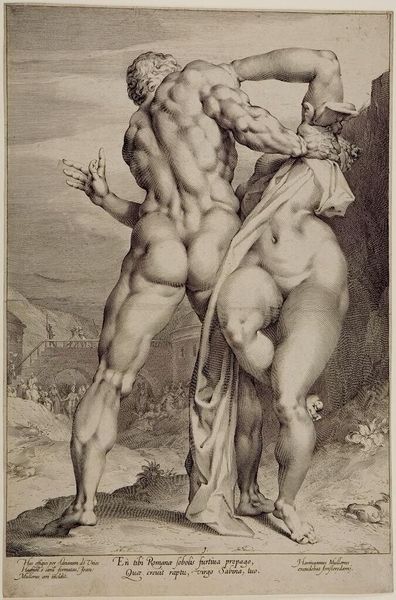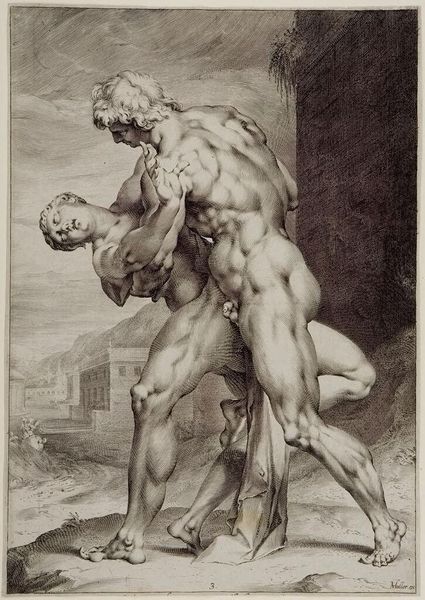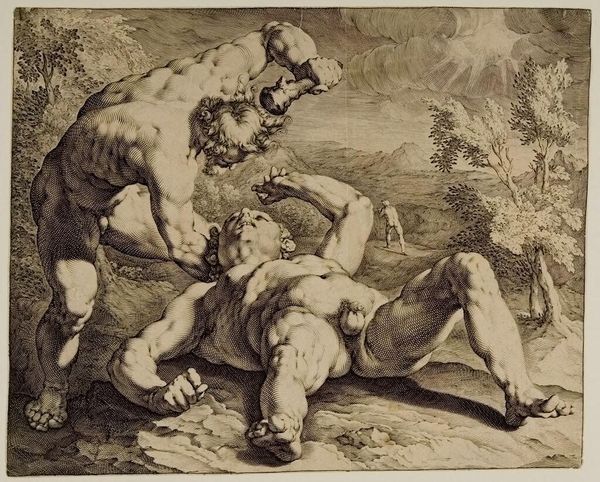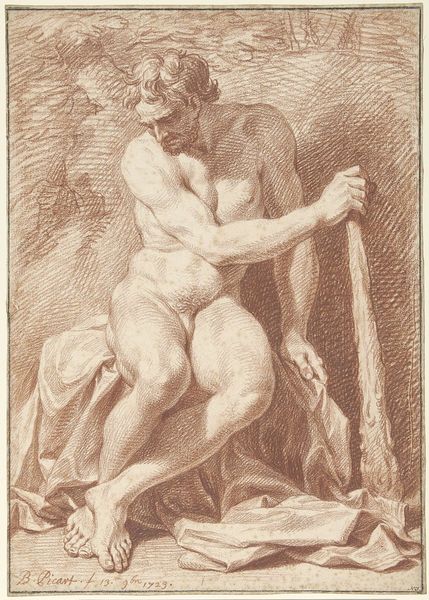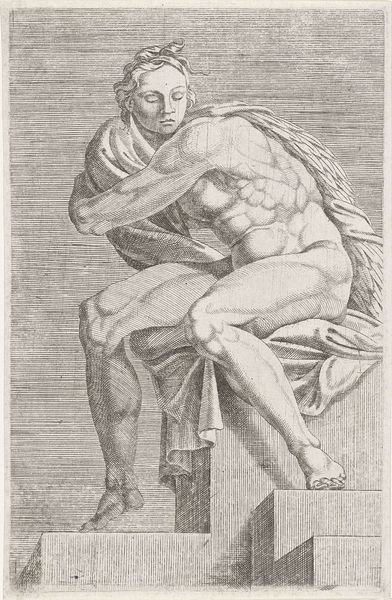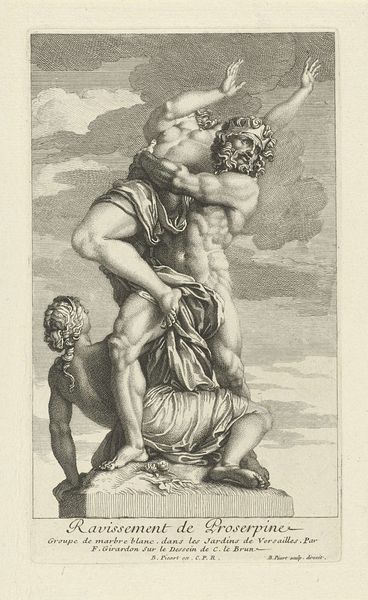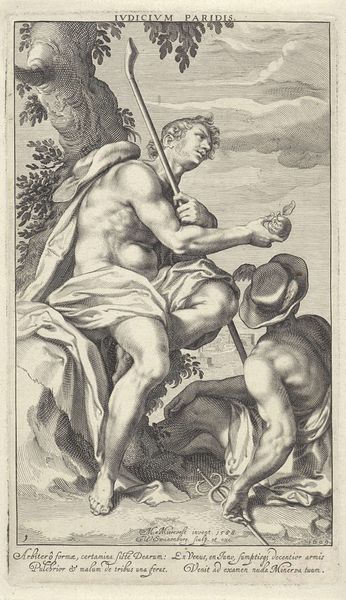
painting, oil-paint
#
allegory
#
baroque
#
painting
#
oil-paint
#
figuration
#
oil painting
#
mythology
#
painting painterly
#
genre-painting
#
history-painting
#
italian-renaissance
#
nude
Copyright: Public Domain: Artvee
Editor: Guido Reni's painting, *Two Fauns in a Bacchic Dance*, captures a world of mythology through oil paint. The piece feels overwhelmingly exuberant; the figures practically leap off the canvas with chaotic glee. What draws your eye when you look at this work? Curator: Chaos, yes! But within that, look how Reni orchestrates these figures – a master of the dance, really. Do you see the echo of the tambourine’s circle in the composition itself? The Faun’s outstretched arm leads your eye towards a frenzy of bodies, barely visible. Reni seems to suggest there is revelry, but at what cost? Is it joyful celebration or is something darker lurking? Editor: I see what you mean. It’s almost unsettling, like there's a shadow in the brightness. Is that why the work is considered Baroque? Curator: Exactly. The Baroque loves this kind of tension. Notice the dramatic use of light, *chiaroscuro*, it isn't merely decorative – the strong contrast almost carves out a sense of underlying unease, doesn't it? Where are the shadows here? And why aren’t they further expanded across the landscape? Editor: So, beyond the surface level of dance and celebration, the painting invites us to consider this unease between light and shadow in Reni's life and work? Curator: Perhaps in *our* lives as well! How different are these Bacchic revelers from our current popular obsessions? Is that sense of freedom truly freeing? What shadows lurk in the height of celebrations today? Editor: That's given me a lot to reflect on; it’s more than just a festive scene! Curator: Agreed, I find I keep finding new things here, even after years of looking at this and similar art of this period. The more I ponder what’s within me, the more emerges in art, and in those who have looked before.
Comments
No comments
Be the first to comment and join the conversation on the ultimate creative platform.
